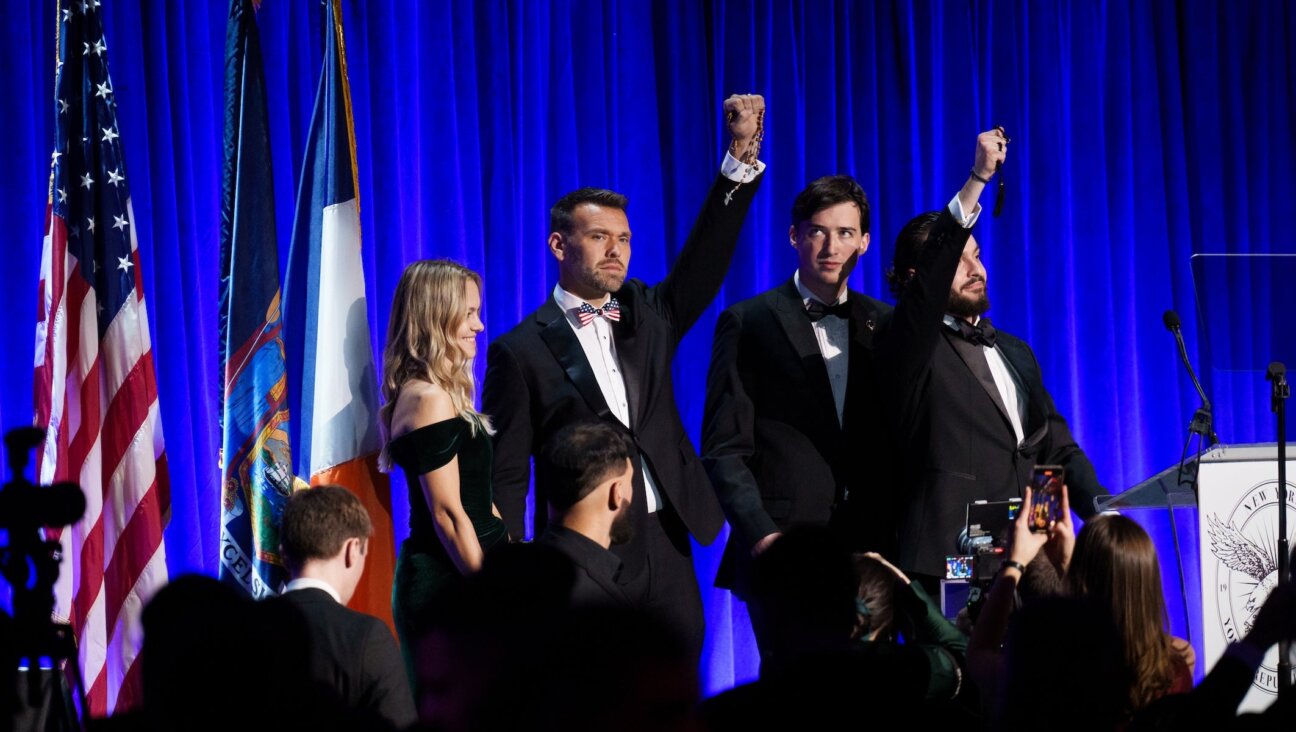Holocaust Survivors and Liberators Meet on Museum’s 20th Anniversary

Freedom Fighter: Ex-President Bill Clinton and Elie Wiesel greet Eldon Ooton, 90, an American GI who helped liberate Nazi concentration camps. Image by getty images
Ending a three-decade quest, Debbie Long on Monday met the American “kid” soldier who freed her mother from a World War II Nazi concentration camp. She threw her arms around Eldon Ooton, now 90, and sobbed.
Long and Ooton were among the former concentration camp prisoners, their families, and the U.S. soldiers who liberated them gathered at the U.S. Holocaust Memorial Museum on Monday at what may be one of the last big gatherings of those who survived the Nazi genocide.
“I just met the man who liberated my mother,” said Long, wiping away tears after hugging Ooton, the veteran from Effingham, Illinois, still trim enough to fit in his World War II uniform, hung with medals.
“They were just kids, those soldiers,” said Long, a Chapel Hill, North Carolina, resident who had been trying since 1984 to find someone from Ooton’s unit, the 84th Infantry Division.
Troops from the unit freed the camp at Salzwedel, Germany, where her ill mother was a prisoner, having survived four concentration camps. The GIs then saved her mother’s life by taking her to a hospital for treatment, she said.
Ooton, a retired barber and real estate agent, said the Salzwedel prisoners he took to a hospital were “just filthy, half starved. It was very shocking to see those people in the street.”
After a hug from Long, he said: “I made my day for coming here. That was worth it all, for her hug and a cry.”
The ceremony marking the holocaust museum’s 20th anniversary drew about 4,000 people, including some 800 survivors and 130 World War II U.S. veterans who had freed labor camps in 1945.
SURVIVORS, LIBERATORS NOW IN 80s, 90s
Steven Luckert, curator of the museum’s permanent exhibitions, said the celebration had more urgency given the advanced age of the former GIs and the survivors of the Nazi campaign to exterminate Jews. Many are in their 80s and 90s.
“The challenge for us is that we’re battling the clock. With the age of the survivors and the World War II veterans, this will probably be one of the last major gatherings,” he told Reuters.
The ceremony at the museum, one of Washington’s top tourist draws, began with the presentation of flags of three dozen U.S. Army divisions that had liberated Nazi camps.
After speeches by Nobel Peace Prize laureate Elie Wiesel and former President Bill Clinton, survivors, American veterans and family members ate lunch and chatted at tables labeled with concentration camps including Auschwitz-Birkenau, Dachau, Bergen-Belsen and Theresienstadt, ghettos like Lodz and Warsaw and regions such as Carpathia and Italy.
Celia Feldman, an 89-year-old survivor of the Auschwitz death camp, said the gathering would be the last that she would attend.
“The next will be (held), but I don’t know how many survivors will be alive, or veterans, you know,” said Feldman, who lives in Queens, New York.
Now it will be up to her children and grandchildren to keep alive awareness of the Holocaust, said Feldman, who was carrying a copy of her memoir, “Bittersweet Memories.”
Luckert, the curator, said the gathering was valuable for giving survivors and veterans the chance to be interviewed and to donate artifacts and documents.












